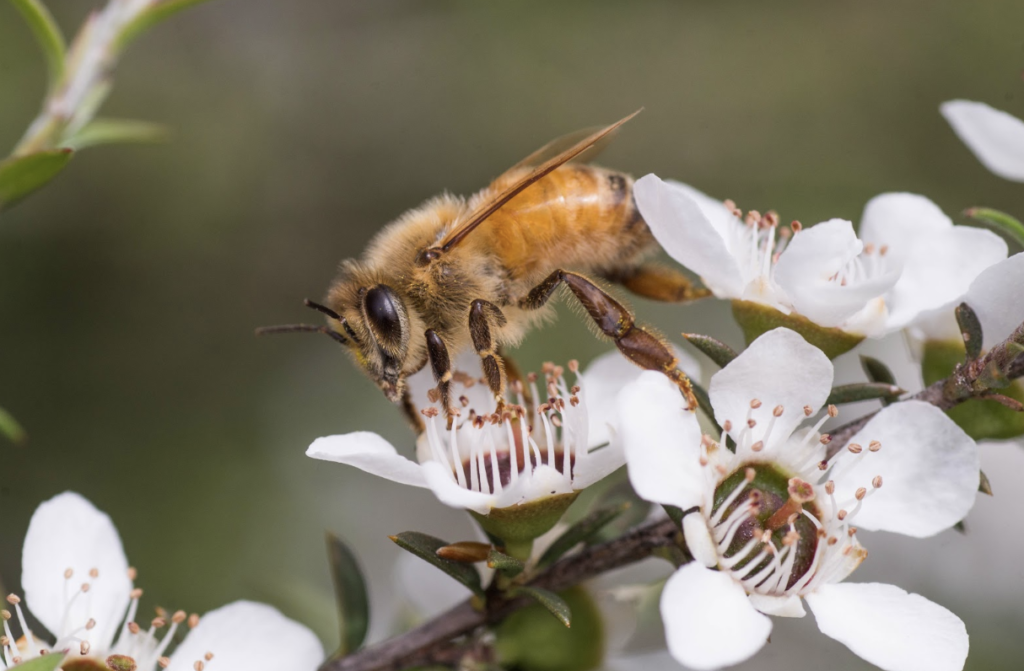The Organic & Natural Skin Healing Power of Manuka Honey
Over a decade ago, I remember seeing a patient for his skin cancer screening exam and he had diabetes. When I was examining his leg for skin cancer, I saw a large scar from a healed wound. I asked him what had happened and he said he hit his leg on the side of the car door months earlier and it had taken months before it healed.
His primary care had done several trial of different wound care treatments topically and orally, prescriptions and over the counter remedies and with his diabetes nothing seemed to work. Then his primary care doctor came across some research of using honey on wounds and found a product called Medihoney, a medical-grade honey. His primary care doctor had valid concerns that using honey may spike patient’s blood sugars, but he had limited options left. They did a trial to see if it would help heal his wound and his wound healed up quickly after he started using it. They watched his blood sugars closely, but he did well. They brought in the box for the prescription as I was excited to research it more and have another natural wound healing option for my patients.
What type of honey has best healing properties?
Interestingly, the type of honey that has best healing properties is not just the regular honey you would put in your tea. It turns out there is a special type of raw honey that has higher healing properties called manuka honey.
Manuka honey is a type of honey that is made by bees that pollinate a special flower called Leptospermum scoparium on a unique shrub in New Zealand called the manuka bush.
Manuka honey’s antibacterial properties make it great option for wound healing on the skin, but also for other skin conditions especially those that may have a microbiome imbalance like acne or eczema.
Manuka Honey and Acne
For those pimple breakouts, mix the manuka honey with some cinnamon and make a therapeutic at-home face mask! You can also use manuka honey as a spot treatment and just target those stubborn pimples.
Honey Tapping: Manuka honey can also used it to help draw out some of the sebum and debris in clogged pores by doing something called “honey tapping”. This is a great additional therapeutic add on you can do at the end of your at home facial mask!
After your manuka honey mask has been on your skin for a few minutes and is a bit sticky, go ahead and use your finger over your stubborn clogged pore areas such as the nose and lightly tap the skin there for a few minutes.
When you have tapped all the areas of your clogged pores, take a warm washcloth and gently wipe the mask off of your skin and it will take some of the debris and sebum that was in your pores with it. After you have washed off all of the mask, apply a gentle non-comedogenic moisturizer.
Manuka Honey & Dry Skin
Honey is a natural humectant so it draws in moisture from the environment into the skin keeping the skin hydrated. It’s unique healing properties make it a great moisturizer to help hydrate, nourish, moisturize and refresh all skin types.
For eczema prone skin, manuka honey is a great therapeutic option to not only help hydrate the skin but also its antibacterial properties can help address microbiome imbalances typically found in eczema prone skin.
The stickiness of manuka honey does hinder its use on large areas of your skin though.
To decrease the sticky feeling you can mix equal parts of manuka honey with jojoba oil. Just be sure to use it right away as you don’t want to have microbes grow in the mixture if you store it for any length of time.
If you are looking for a cream version of manuka honey to purchase that is already made, some of my patients have had good results using Organic Manuka Skin Soothing Cream.
You can also use manuka honey as a cleanser when you have dry skin.. Just mix a dollop of manuka honey with warm water and use on wet skin as a gentle cleanser and rinse off thoroughly.
Where do I get Manuka Honey?
Manuka honey is available to purchase in natural food stores and online. A few caveats before you buy….
- If you have diabetes please consult your doctor prior to using manuka honey topically or orally.
- Do not use manuka honey if you have an allergy to bees or honey
- Do not use topically or orally on an infant and consult your pediatrician for its use in children.
- If you have sensitive skin, do a small trial area of manuka honey on your skin first.
What does UMF stand for on Manuka Honey labels?
When you purchase manuka honey, you want to pay attention to the Unique Manuka Factor (UMF).
UMF is the rating system used to rate the levels of the 3 key therapeutic ingredients in manuka honey: leptosperium, dihydroxyacetone (DHA) and methylglyoxal (MGO).
For skin issues, I like using products with a UMF rating of 15 + or more. This way you know you are getting real manuka honey and with higher rating of it’s healing properties.
Let me know what your results are with using Manuka Honey for your skin condition!


